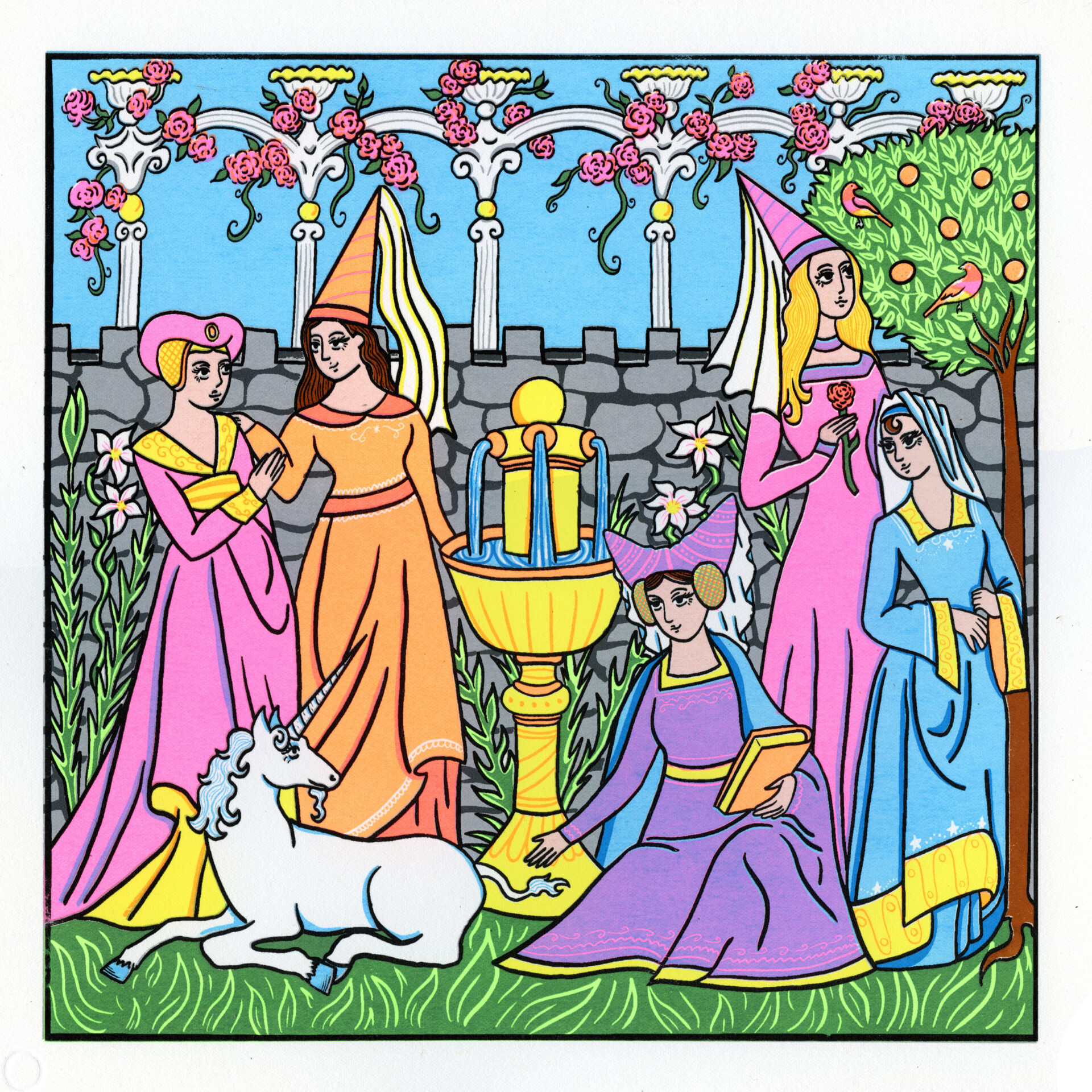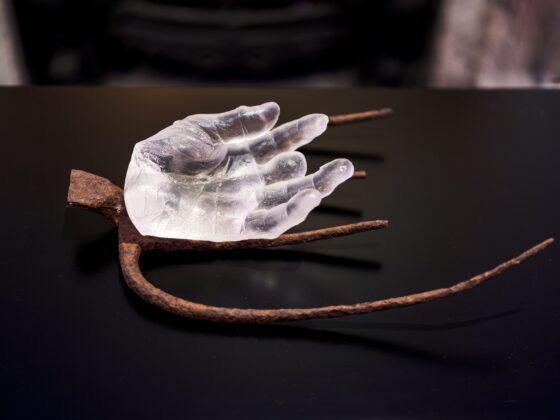AOIFE CAWLEY DISCUSSES HER WORK AND PRACTICE IN THE CONTEXT OF MODERN MYTHOLOGY, HISTORY, AND A NEW CELTIC REVIVAL.
Evolution of Practice
I have always been a creative person and I did art in school, but I really did not enjoy it. There is only so many times one can be forced to draw a still life of a pencil using only pencils! I think my art education in school was just drawing realistically, which I hated and I didn’t really gain an understanding of other processes. I went to the University of Limerick for two years to study French, German, and Irish. I dropped out after two years, but to be fair to me, I was only 17 when I started, plus I was sold a dream of travelling and working in the EU if I did languages!
I stayed living in Limerick, working full time in retail jobs, and I was quite unhappy. I was friends with a lot of people studying in Limerick School of Art and Design and seeing what they were making and what art could be. At the time, I took 35mm photos on a point and shoot, and uploaded them to Instagram. My group was really encouraging of this and said “You know you can do this at art college.”
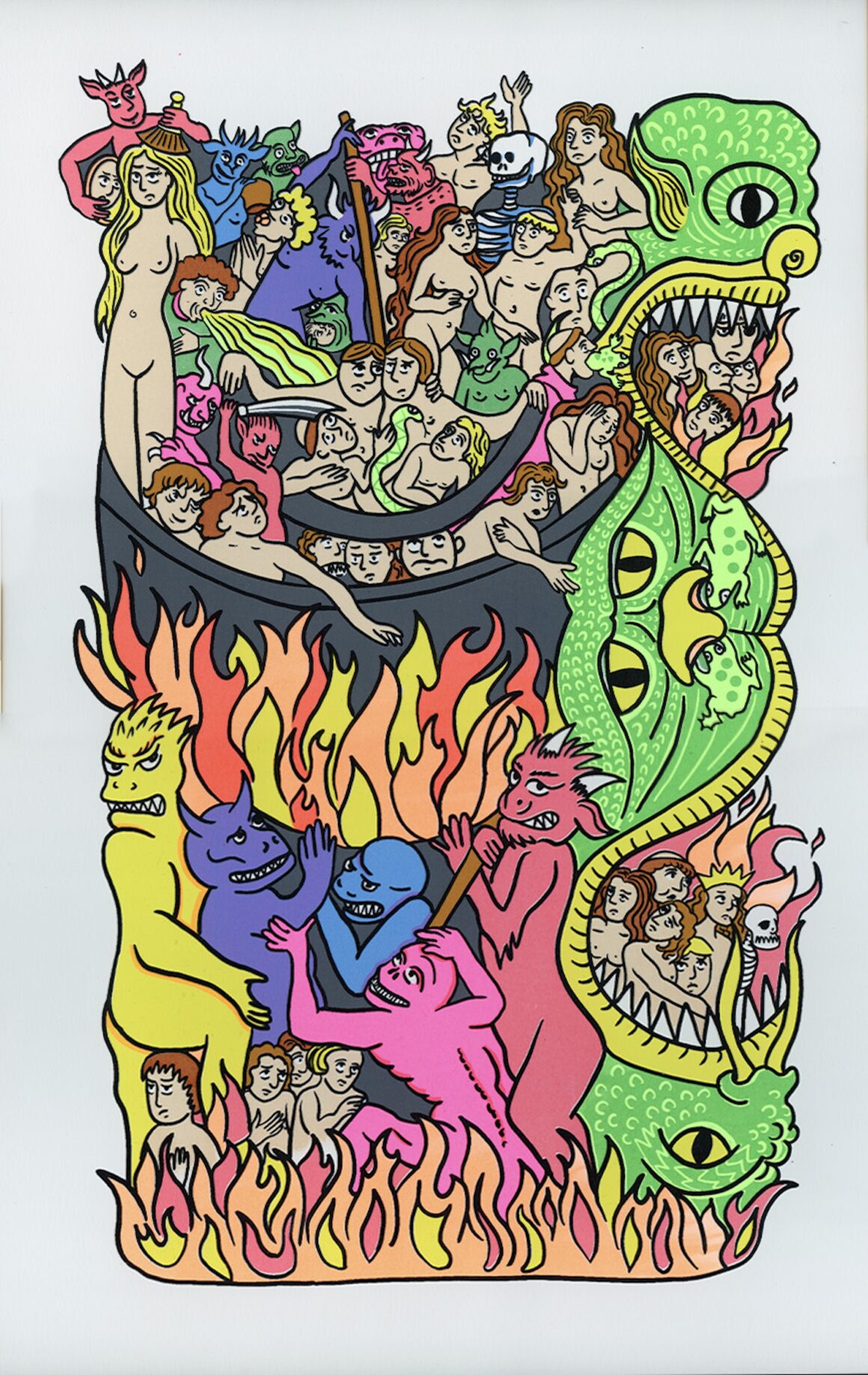
At the time of my portfolio course, universities in Scotland were free to EU students. I got accepted into the Contemporary Art Practice undergraduate course at Duncan of Jordanstone College of Art and Design. I did two years online (as I started right at the beginning of the pandemic) and did my final two years in person. I graduated last year in 2024.
I really like to highlight this story, as my journey to becoming an artist was not that straight forward. I would like people to know that there is a way around and into everything. It might not be the easiest or shortest route, but if you are determined, you will get there. I especially wish I could tell this to my younger self.
History, Folklore, and Mythology
My practice relies heavily on each of these strands. I think they’re all extremely relevant to each other too, and I’m interested in how they interact. For example, history can often be mythologised. I spent some time last summer on the Holy Island of Lindisfarne and became fascinated by one of the first recorded, and devastating, Viking attacks in Britain. Contemporary accounts of the time record how “fiery dragons” were seen in the sky while it took place. The lives of saints, such as Patrick, Brigid, or Colmcille, are so wrapped up in this incredible folklore that it becomes difficult to see the historically accurate figures anymore. Is this a good thing or a bad thing? I would argue that the added elements of fantasy are in fact positive as they keep these events or figures alive. It also provides me with fantasy-like visions of the past that make it extremely easy to illustrate.
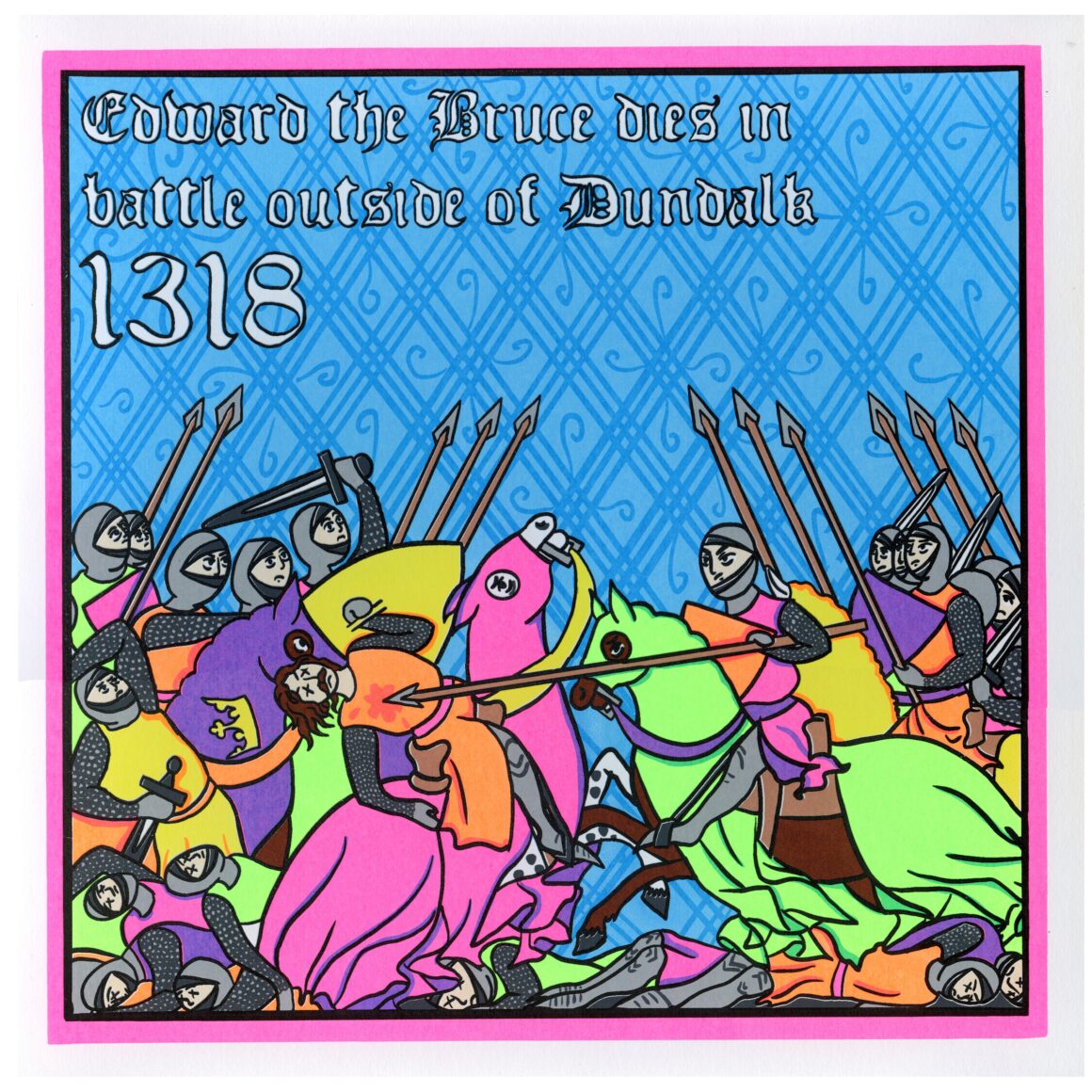
Ancient Styles for Today
I like to use colours that I am attracted to. If I go to a gallery and there is something bright and colourful, it is more than likely going to be my favourite piece in the exhibition. I began using a lot of fluorescent pink in my work, simply because it was my favourite colour. I then discovered that there was also a fluorescent orange and green and that they all worked together.
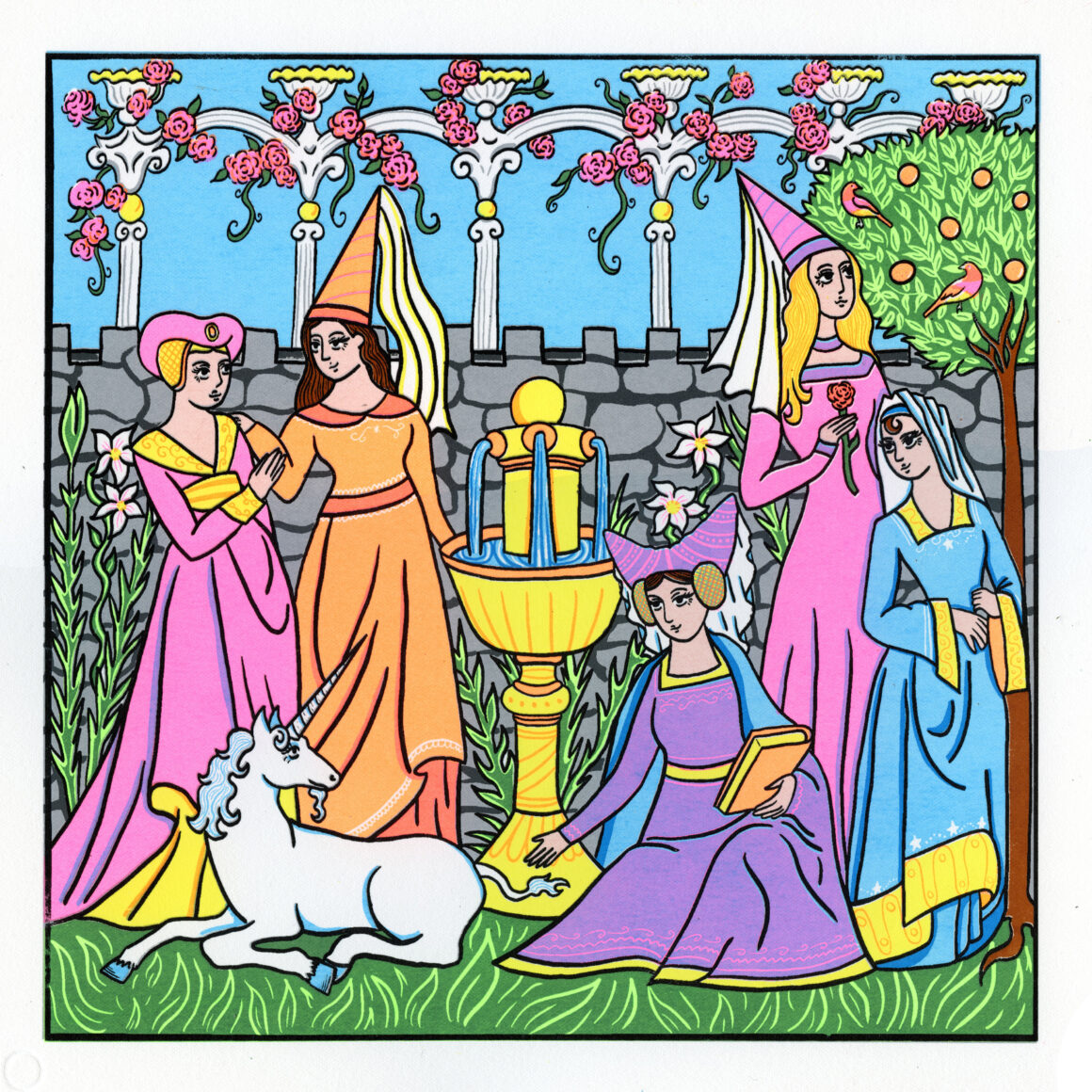
I think these bright and bold colours really lend themselves to my work for a number of reasons. The neon inks have a glow reminiscent of stained glass and illuminated manuscripts – media prominently used during medieval times. It is easy for people to forget how colourful the past was; for example, the Book of Kells is still remarked for its colour. If those monks had access to neon colours, they probably would have used them. I think that my medieval style of drawing is very accessible to contemporary audiences.
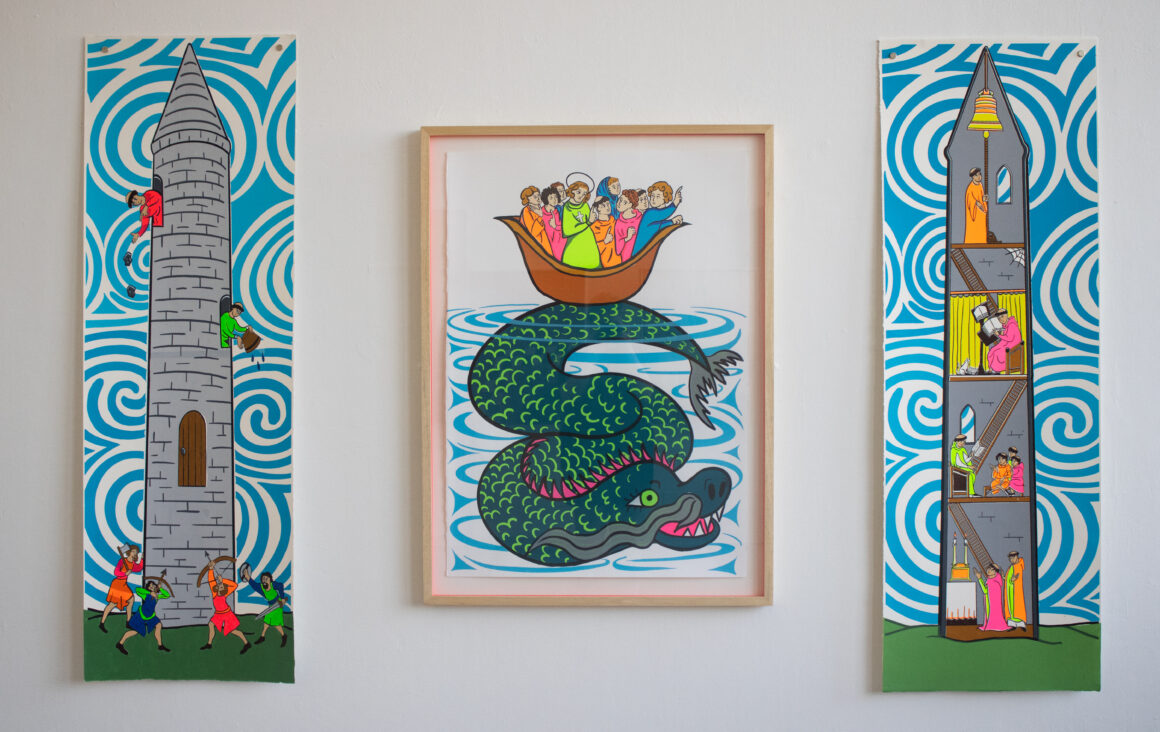
A New Celtic Revival
The inspiration for a lot of my work and designs comes from Celtic and medieval histories. I wrote my dissertation in university on the Irish Arts and Crafts movement to give myself a better understanding of why these symbols and stories are so linked with our national identity. I think, because of this time period, we have a very strong visual branding, but it is really cool to see other contemporary artists breathe new life into this genre in what has been described as a ‘Celtic Revival’. The artists and illustrators involved in this new wave demonstrate a diverse range of interpretations; they have really varied views on what St Brigid looked like, for example.
At the heart of my work is educating others and sharing my knowledge and research with a wider audience. I want to highlight the significance of these stories to our culture and identity and despite sometimes being thousands of years old, how they can be moulded into a contemporary contexts and meanings.
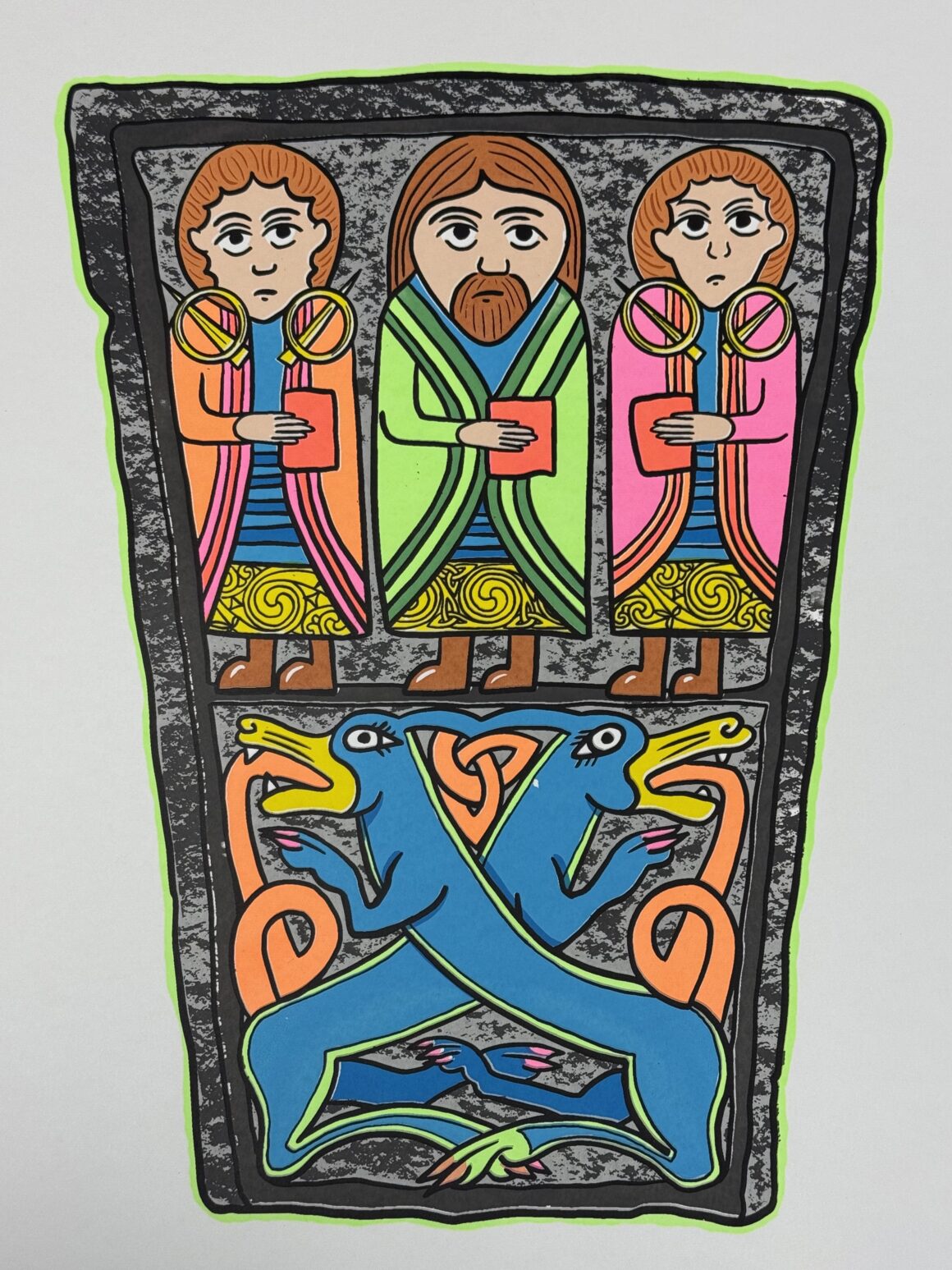
Women, History, and Myth
Women are central to my work, but I wouldn’t say I’m that interested in putting a spotlight on women from mythology, but more so from history. My ‘Mná na hÉireann’ risograph postcard set was born through frustration of there being a lack of representation of our female patriots, revolutionary leaders, patrons, and thinkers of the early 20th century. We were given a summer project while in university to identify a statue in our locality and to tear it down, amend it, or to just build a new one completely. It became quickly apparent that there were no statues in Limerick City of a named woman, and this really frustrated me. I had discovered that Kathleen Clarke’s (née Daly) family home was just up the road from me, but no statue, bust, or plaque could be seen anywhere. The only image of Maud Gonne I had seen was that of a muse for WB Yeats, not as the founder of Irish language and culture organisations for women. I began my research into the many women that fought alongside the men during the revolutionary period, and I wanted them to be honoured in the same way the men were. On postcards, posters, and other printed material.

As for women featured in stories of mythology, I do find that their playing field is a bit level to the men’s. Of course the goddesses have their powers, but it is usually the everyday woman that is overlooked in these stories. I recently read some retellings of the Iliad from Greek mythology that focused on the point of view from just the everyday women and their treatment through these mythological/legendary wars and it has made me reconsider the ‘heroes’ we focus on. Do we look past their treatment of women just because they were the best warriors in all of Ireland/Greece? Maybe we should apply this thinking in a real life context too.
Merch and the Contemporary Artist
I am constantly being told that my designs, like my scarves, are spotted everywhere, but I am yet to see one myself out in the wild. Maybe I don’t leave the house as much as I should!
I am extremely grateful that I have this ‘merch’ aspect to my practice, as it heavily funds what I would consider my ‘fine art’ practice. Without the scarves or stickers or my commissions for businesses and companies, I definitely would not be able to create screen prints of up to 20 layers. I would not be able to have the time to put all my effort into research, reading, recording, and visiting what truly inspires my work. I would not be able to afford my print studio fees, materials, my rent, or my bills.
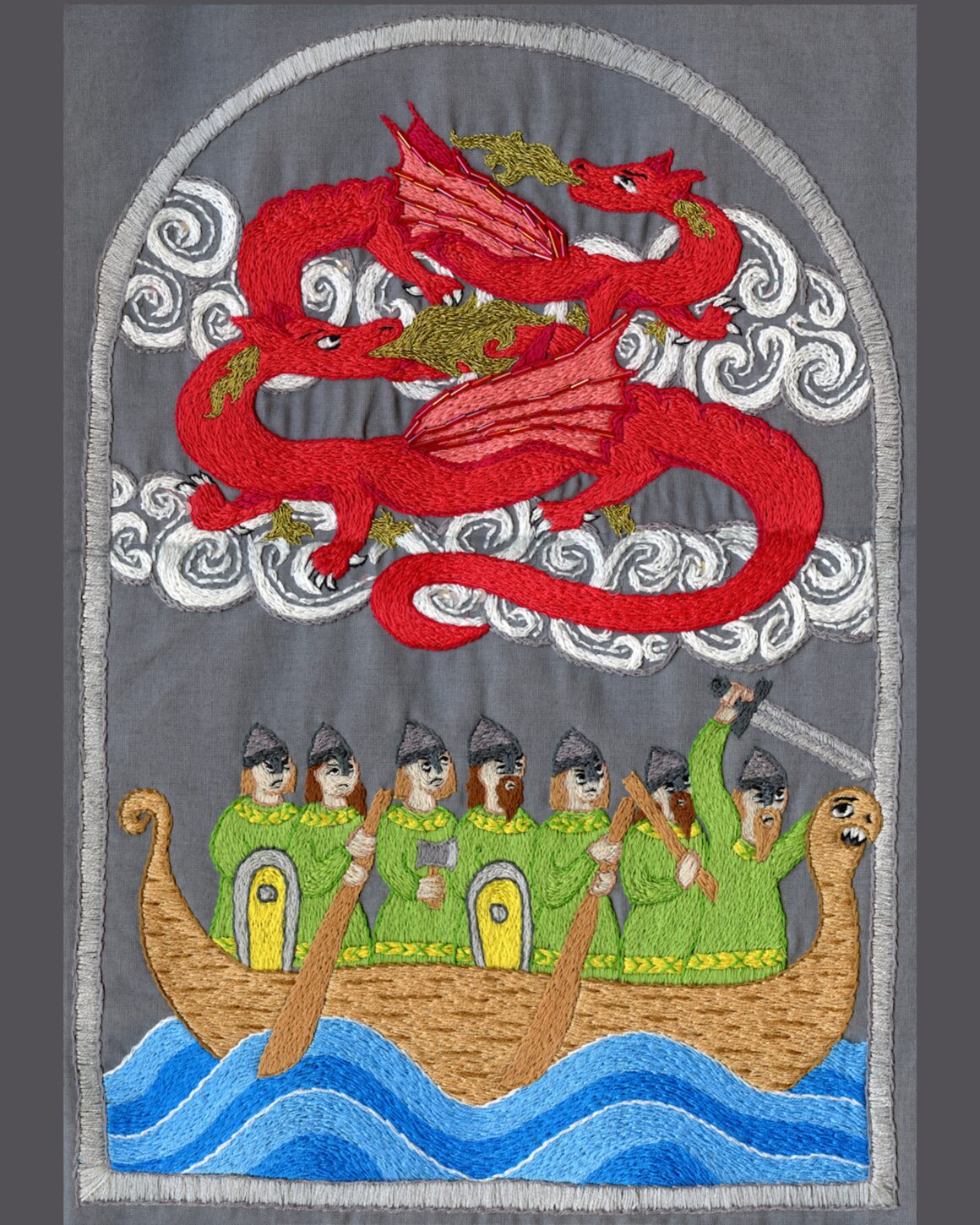
I think that maybe some people would think that the merch would ‘cheapen’ their practice, but I don’t think that is fair to say. I think it makes the work more accessible. I am also very aware of the age range of the people who support my work, and how purchasing a fine art screen print of mine might not be possible at the moment due to the cost of living crisis. But by purchasing a scarf or a sticker, you can acquire art more easily.
Coming Up
I always have so many ideas and plans backlogged until the time is right. I might learn a new technique or a composition will come to me as a vision. For example, I have always been interested in the Táin Bó Cuailigne, and even debated creating a massive print of the battle for my degree show, but it just didn’t feel right. I was recently passing through Dublin airport and passed one of the Irish tourist tat shops and they were blasting Dearg Doom by the Horslips. That’s when it came to me, this vision of Cú Chulainn standing fiercely, Queen Medb lurking over the battlefield like a puppeteer. I am now currently working on the drawings for a series of screen prints.
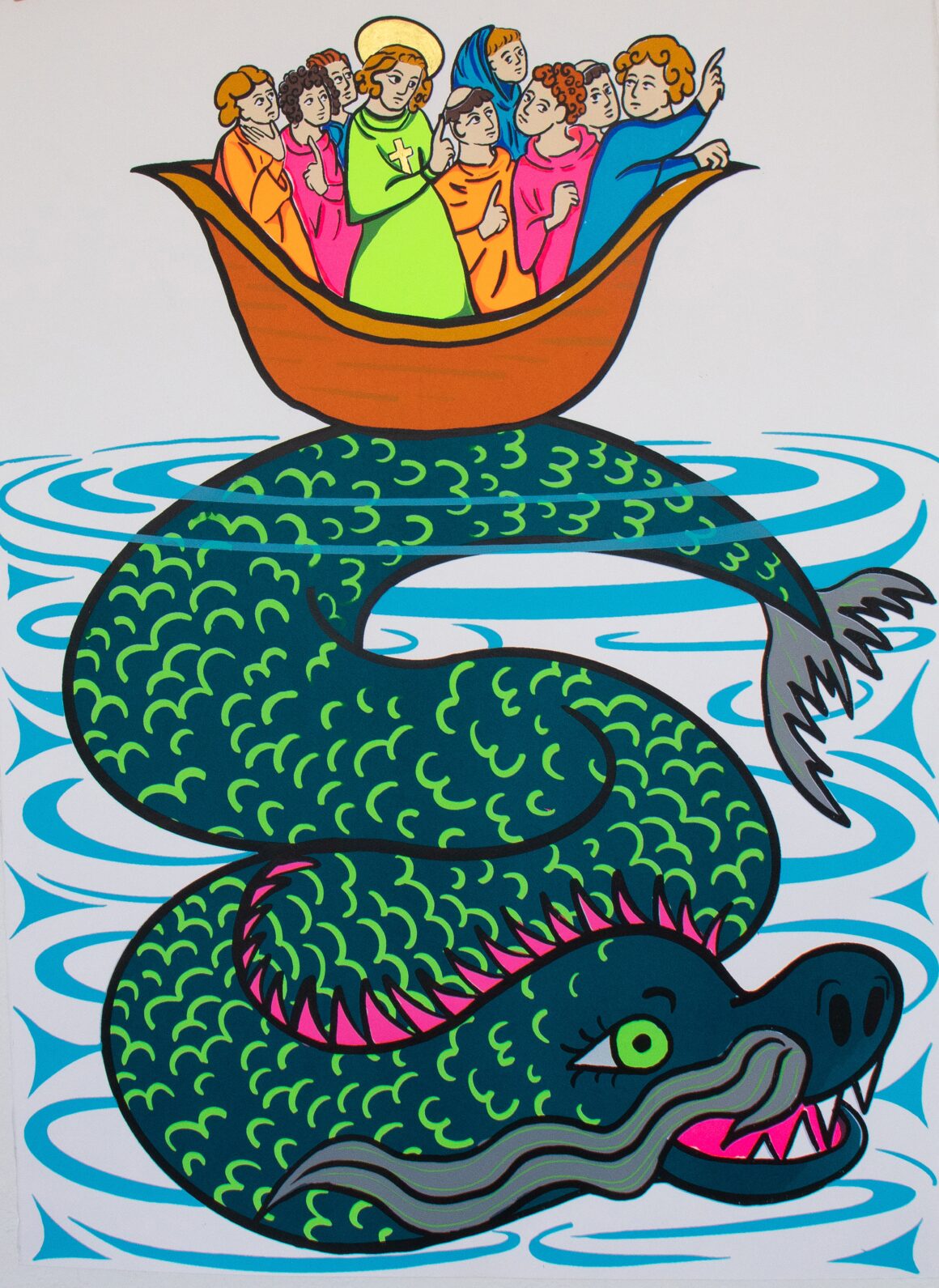
I read the Canterbury Tales recently and found the introduction section where Chaucer introduces all the pilgrims in detailed description very visually stimulating. How each traveller nearly matched their horse in appearance and how each pilgrim matched their story. I would love to take on a huge project where I illustrate a scene from each of their stories along with the full troop on their way to Canterbury.
But like I said, I am working from a backlog of ideas that are slowly but surely making their way through. I was very fortunate to be awarded funding from the Royal Scottish Academy for my degree show work to spend 12 weeks in Florence. I am extremely looking forward to that trip as I can only imagine the inspiration I will gain from the city’s history.
Aoife Cawley is a printmaker and textiles artist from county Kildare, now working between Ireland and Scotland.

